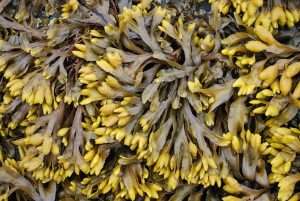August 25 2020
Macroalgae Biomass
A Sustainable Feedstock for Food, Feed, Fuels and Chemicals
Marc von Keitz, U.S. DOE Advanced Research Projects Agency – Energy (ARPA-E) was the moderator. The 4th Spotlight Series from the Algae Biomass Summit was all about macroalgae biomass
Today macroalgae and microalgae worlds are beginning to overlap. Whether it’s through adoption of technologies that worked for one industry being adapted to work in the other, or creating more value to the consumer by combining macroalgae biomass and microalgae ingredients into more functional foods and nutraceuticals.
What is carrying capacity?
A key concern for many farmers is carrying capacity. This is the yield that can be harvested out of out of a body of water sustainably year after year. WWF is concerned about the carrying capacity of the earth. With our current population growth and consumption patterns, we’re consuming more than the earth can sustain. That’s a really and scary thing to think about. Luckily there is an underutilized resource – the ocean! And we can grow seaweed in the ocean. There are 40 species of macroalgae are farmed each year, and their yields continue to improve with strain selection. These seaweeds are farmed for food, feed, extracts, and emerging bioplastics technology. The beauty of this is that it requires no arable land, freshwater, feed, pesticides, or fertilizers.
We can all agree that farming 40 species is impressive. Scientist believe there are over 12,000 species of seaweed in the worlds oceans! We put these species into three buckets:
- The Reds
- The Greens
- The Browns – more commonly known as kelp’s
That gives us so much opportunity to identify new species that can be added to the species currently farmed. To produce biomass, animal feed, human feed, bioplastics, nutraceuticals, and pharmaceuticals to name a few.
What is the first thing that comes to mind when you think of seaweeds? Most likely you think of the traditional, carrageenan, agar, etc. There is actually lots of opportunity for product innovation. There’s growing evidence that feeding seaweed to animals can help the animals be healthier, and may even reduce the methane they create. Scientists are examining if seaweeds could be a good feed for finfish and other marine aquacultured species. Many species of seaweed have a high sugar content and can even be used to make alcohol.
Seaweed farming can absorb CO2, phosphorus, and nitrogen. This has a positive environmental impact within their farms, and also on the surrounding water column.
The good news is there’s lots of space for seaweed farming still available! Time to create some macroalgae biomass and save the planet at the same time 🙂
Paul Dobbins, WWF
Seaweed Farming. A Conservation Organization Perspective
Javier Infante, Ocean Rainforest
Large Scale Macroalgae Cultivation Systems (Macrosystems)
Ignacio Navarrete, University of Southern California
A Depth-cycling Approach to Open-ocean Seaweed Mariculture
Vincent Doumeizel, Lloyd’s Register Foundation
Time to Launch a Global Coalition for Safe Seaweed Production
Beau Perry, Blue Evolution
Pacific Coast Seaweed – What It Takes to Build a New Industry
Please visit the Algae Biomass Organization website to find out more about this years virtual summit. Still lots of time to join and be part of the algae community.

